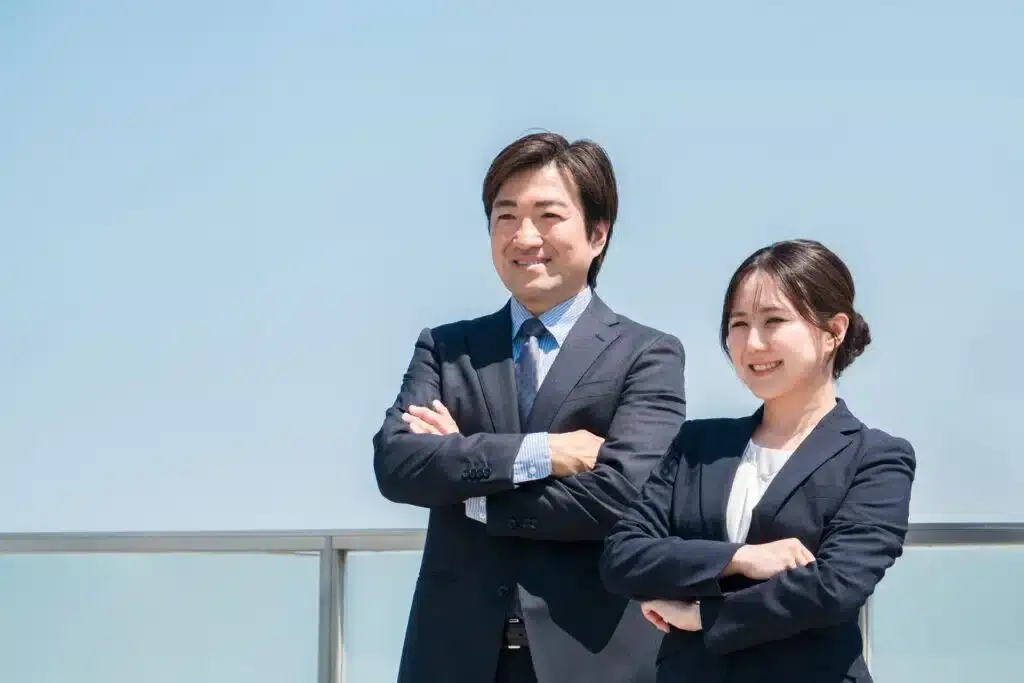Enforcement in June of Reiwa 7 (2025): Heatstroke Prevention Measures in the Workplace Mandated by the Occupational Safety and Health Law Amendment: What Measures are Necessary for Businesses?

On June 1, Reiwa 7 (2025), the amended Japanese Industrial Safety and Health Act was enforced, explicitly mandating “measures against heatstroke” as a legal obligation for companies. As a result, employers must take specific measures to prevent the onset and worsening of heatstroke among workers laboring in hot environments. This amendment is established as an “obligation with criminal penalties,” thus requiring companies to take prompt action.
This article will explain the obligation to implement heatstroke countermeasures as stipulated by the amendments to the Japanese Industrial Safety and Health Act.
Heatstroke Prevention Measures Under the Japanese Industrial Safety and Health Act
Until now, heatstroke prevention measures at Japanese workplaces were limited to a few provisions set forth in the “Industrial Safety and Health Regulations,” which dictate the application of the “Industrial Safety and Health Act,” a law designed to ensure the safety of workers in the workplace.
Specifically, the following measures were stipulated:
- Article 606 of the Industrial Safety and Health Regulations: The obligation to take measures to adjust temperature and humidity in indoor workplaces where there is a risk of harm due to heat, cold, or high humidity.
- Article 607 of the Industrial Safety and Health Regulations: The obligation to regularly measure temperature, humidity, and radiant heat in the relevant indoor workplaces at least once every six months.
- Article 617 of the Industrial Safety and Health Regulations: The obligation to provide salt and drinking water in workplaces where work involves excessive sweating.
Reference: Industrial Safety and Health Regulations | e-Gov Law Search
The Background Behind the Obligation to Implement Heatstroke Measures Under the Revised Japanese Industrial Safety and Health Act

The recent amendment to the law was driven by an increase in work-related accidents due to the severe heatwaves in recent years.
Heatstroke poses a significant and potentially fatal risk, especially for outdoor workers and those working indoors without adequate air conditioning. According to the Ministry of Health, Labour and Welfare’s “Report on the Occurrence of Heatstroke-Related Injuries and Deaths in the Workplace in Reiwa 6 (2023) (Final Figures),” there were over 1,257 cases of heatstroke-related injuries and illnesses in the workplace in 2023, resulting in 31 deaths. The existing measures for heatstroke prevention were deemed insufficient due to “delays in detection” and “lack of proper measures during emergencies.”
The Necessity of Mandating Heatstroke Prevention Measures in Japan: Delays in Detection
The Ministry of Health, Labour and Welfare has compiled a document titled “Strengthening Heatstroke Prevention Measures in the Workplace” regarding the recent amendments to the Japanese Industrial Safety and Health Act.
According to this document, out of 103 fatal accidents caused by heatstroke from the year Reiwa 2 (2020) to Reiwa 5 (2023), 78 cases were discovered in a critical state, highlighting the issue of delayed detection.
On-site, early symptoms such as dizziness and nausea are often dismissed as “temporary ill health,” and without appropriate measures, symptoms can rapidly worsen. This can lead to emergency transport or even fatal accidents. Therefore, it is essential to consider health checks and early detection of abnormalities as part of workplace duties, and to establish education and systems to ensure that every employee does not overlook any symptoms.
The Necessity of Mandating Heatstroke Countermeasures 2: Inadequacies in Emergency Response
Another challenge is the lack of a well-established response manual for when heatstroke occurs, leading to delayed or inappropriate actions at the scene. According to the Ministry of Health, Labour and Welfare’s “Strengthening Heatstroke Countermeasures in the Workplace,” out of 103 fatal accidents caused by heatstroke from the year Reiwa 2 (2020) to Reiwa 5 (2023), 41 cases were partly due to the failure to transport the victims to medical institutions or to take appropriate measures.
For instance, allowing rest without cooling treatment, delayed contact with medical institutions, or a lack of shared knowledge about first aid at the site can lead to an inability to respond organizationally to a crisis, potentially exacerbating the damage. In light of such situations, the revised Occupational Safety and Health Law in Japan has legally mandated the “prevention of worsening conditions” and the “strengthening of initial responses” for heatstroke.
Content of the Revised Industrial Safety and Health Act Enforced on June 1, Reiwa 7 (2025)
As of June 1, Reiwa 7 (2025), the revised Industrial Safety and Health Act in Japan has been enforced, introducing specific measures for preventing heatstroke as a legal obligation. For certain types of work that meet specific criteria, the establishment of a reporting system and the implementation of measures to prevent worsening conditions have become mandatory.
Firstly, Article 22, Item 2 of the Japanese Industrial Safety and Health Act mandates that workplaces must take measures to prevent health damage caused by high temperatures.
Article 22: Employers must take necessary measures to prevent the following health impairments:
(Omitted)
2. Health impairments caused by radiation, high temperatures, low temperatures, ultrasonic waves, noise, vibration, abnormal atmospheric pressure, etc.
Industrial Safety and Health Act | e-Gov Law Search
Furthermore, Article 27 of the Japanese Industrial Safety and Health Act states that the measures employers should take are to be prescribed by Ministry of Health, Labour and Welfare ordinances.
Article 27: The measures that employers should take pursuant to the provisions of Articles 20 to 25 and Paragraph 1 of Article 25-2, and the matters that workers must comply with pursuant to the preceding article, shall be prescribed by Ministry of Health, Labour and Welfare ordinances.
Industrial Safety and Health Act | e-Gov Law Search
This revision has established measures against heatstroke in the Ministry of Health, Labour and Welfare ordinance, specifically in Article 612-2 of the Enforcement Regulations of the Industrial Safety and Health Act.
(Work that may cause heatstroke)
Article 612-2: When an employer conducts work that may cause heatstroke, such as continuous work in hot environments, they must establish a system in advance that allows for reporting when a worker engaged in the work exhibits symptoms of heatstroke or when another worker discovers a suspicion of heatstroke in a worker engaged in the work. The employer must also make known to the workers engaged in the work the established system.
2. When an employer conducts work that may cause heatstroke, such as continuous work in hot environments, they must, in advance, define the content of necessary measures for each workplace to prevent the worsening of heatstroke symptoms, such as withdrawal from the work, body cooling, and receiving medical examination or treatment as needed, as well as the procedures for implementing these measures. The employer must make known to the workers engaged in the work the content of these measures and the procedures for their implementation.
Industrial Safety and Health Regulations | e-Gov Law Search
The Basic Concept Behind the Amendment
The fundamental policy of this amendment is the mandatory establishment of minimum measures against heatstroke.
Based on the “WBGT value,” an index for assessing heat stress in hot environments, appropriate measures are required for tasks deemed to be at risk of heatstroke.
Workplaces in Japan Requiring Measures Against Heatstroke
Workplaces in Japan that must implement heatstroke prevention measures are those “where work is continuously performed in hot environments, or where there is a risk of heatstroke from the nature of the work.” The specifics of these measures are outlined in the notice “Basic Issue No. 0520-6 (May 20, 2021 (Reiwa 3))” as follows:
| Term | Definition |
| Heatstroke | A general term for disorders that occur in high-temperature and high-humidity environments, where the balance of water and electrolytes (such as sodium) in the body is disrupted, and the body’s temperature regulation function fails. |
| Hot environments | Places where the Wet Bulb Globe Temperature (WBGT) is 28 degrees Celsius or higher, or where the temperature is 31 degrees Celsius or higher. This does not necessarily refer only to specific work sites inside or outside the business premises but also includes work performed at business trip destinations, work by laborers moving between multiple locations, and during the transition from one work site to another. |
| Work continuously performed in hot environments, etc., where there is a risk of heatstroke | Work expected to be performed continuously for one hour or more, or exceeding four hours per day, in the above-mentioned environments. |
Whether a place qualifies as a hot environment is primarily determined by measuring the Wet Bulb Globe Temperature (WBGT) or the temperature at the location where the work is performed. Additionally, it may be possible to make this determination using heatstroke prevention information sites operated by the Ministry of the Environment and other resources.
Furthermore, even if the work does not fall under the category of activities with a risk of heatstroke, the intensity of the work and the state of clothing can increase the risk of heatstroke. Therefore, employers are encouraged to take measures in accordance with the revised ministerial ordinance.
Reference: Basic Issue No. 0520-6 (May 20, 2021 (Reiwa 3)) | Ministry of Health, Labour and Welfare
Strategy 1: Establish and Publicize a Reporting System for Heatstroke Cases
One of the key strategies for heatstroke prevention is to establish and publicize a reporting system as mandated by Article 612-2, Paragraph 1 of the Japanese Industrial Safety and Health Regulations. It is essential to determine who within the workplace should be notified and to establish contact details, then ensure this information is widely known by displaying it in visible areas of the workplace, sending it via email, or distributing it in document form.
Strategy 2: Prepare and Publicize Measures to Prevent Heatstroke Worsening
The second strategy for heatstroke prevention involves preparing and publicizing measures to prevent the worsening of heatstroke, as stipulated in Article 612-2, Paragraph 2 of the Japanese Industrial Safety and Health Regulations. The following measures are specified for preventing the worsening of heatstroke:
- Withdrawal from the work causing heat exposure
- Cooling of the body
- Seeking a doctor’s examination or treatment as necessary
- Other necessary measures to prevent the worsening of heatstroke symptoms
Pages 6 and 7 of the Ministry of Health, Labour and Welfare’s guidelines on strengthening heatstroke measures in the workplace provide examples of procedures for individuals at risk of heatstroke, presented in a flowchart format. These examples should be referenced to develop prevention measures tailored to the actual conditions on-site. It is also essential to ensure that the developed measures to prevent the worsening of heatstroke are well-publicized.
Penalties for Companies Neglecting Heatstroke Prevention Measures in Japan

Failure to implement adequate heatstroke prevention measures can lead to administrative guidance, administrative penalties, or even criminal charges.
Claims for Damages Due to Neglecting the Duty of Safety Consideration for Heatstroke Prevention
Companies and workers are bound by an employment contract. Article 5 of the Japanese Labor Contract Law stipulates that companies have a duty to ensure the safety of workers’ lives and bodies so that they can work in a secure environment (duty of safety consideration). If a worker suffers from heatstroke due to the company’s failure to take appropriate heatstroke prevention measures, the company may be liable for breaching this duty of safety consideration and face claims for damages.
Administrative Penalties for Violating the Obligation to Prevent Heatstroke
The Labor Standards Inspection Office, an administrative body for the Occupational Safety and Health Law, is empowered by Article 91 and other provisions of the Occupational Safety and Health Law to do the following when deemed necessary for the enforcement of the law:
- Enter the workplace
- Question related parties
- Inspect books, documents, and other articles
- Conduct work environment measurements
- Seize products, raw materials, or equipment to the extent necessary for inspection without charge
- Require reports
- Order appearance
- Order the suspension of all or part of the work
- Order the suspension of use of all or part of the buildings, etc.
Dealing with the Labor Standards Inspection Office and being ordered to suspend business operations or the use of buildings can impose significant burdens on a company.
Criminal Penalties for Violating the Obligation to Prevent Heatstroke
If a company violates Article 22 of the Occupational Safety and Health Law, which mandates heatstroke prevention measures, it may be subject to a sentence of imprisonment for up to six months or a fine of up to 500,000 yen under Article 119, Item 1 of the same law. Criminal penalties can be imposed not only on the representatives or responsible parties but also on the company itself.
Note that as of June 1, Reiwa 7 (2025), the traditional penalties of imprisonment and confinement have been consolidated into a detention penalty. For more details, please refer to “[June Reiwa 7 (2025)] What is the newly established ‘Detention Penalty’ due to the Penal Code revision? Explaining the significance of the revision and four key points“.
Summary: Companies Must Promptly Review Heatstroke Prevention Measures
With the enforcement of the revised Occupational Safety and Health Act on June 1, 2025 (Reiwa 7), the approach to heatstroke prevention measures for companies in Japan has significantly changed into a legal obligation. Companies are now required to conduct risk assessments based on WBGT (Wet Bulb Globe Temperature) index values, and to establish specific measures such as cooling procedures, reporting systems, and initial response manuals. Failure to comply may result in administrative penalties or criminal charges. If measures have not yet been implemented, it is imperative that companies promptly begin to address this issue.
Guidance on Measures by Our Firm
Monolith Law Office is a law firm with high expertise in both IT, particularly the internet, and legal matters. Our firm provides legal support for the sophisticated management challenges unique to IT and venture companies, ranging from Tokyo Stock Exchange-listed corporations to venture businesses. The details are described in the article below.
Areas of practice at Monolith Law Office: Corporate Legal Affairs for IT & Venture Companies
Category: General Corporate
Tag: General CorporateIPO





















